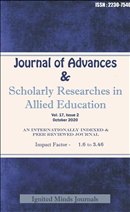Realism & Social Consciousness in Vikram Seth Narration
Exploring Realism and Social Consciousness in Vikram Seth's Narration
Keywords:
realism, social consciousness, Vikram Seth, Indian authors, fictional work, narrative strategy, realistic Indian Fiction, story mode, Indian society, realistic movementsAbstract
The use of Realism and its social concerns by Vikram Seth is unique to other Indian authors. Several concepts about realism have analyzed his major fictional work to determine the characteristics of realism in his novels. By analysing important works in the realistic Indian Fiction stream in English, a serious effort has been made to point out that realism prevails in all of them as a narrative strategy. Seth separated himself from the car of other realistic writers and established his prominence over other as the main writer in the subcontinent by his own narrative strategy and unique social concern. By thoroughly analyzing different points of view on realism, we have created a definition of realism which corresponds to Seth's novels. It is discussed in depth and thereby established the affinities of Indian writers in English for the adoption of this particular story mode which is suitable for fictionalizing the Indian society that leads to the creation of this narrative mode. Seeking a complete image of the realistic movements, views from some truthful critics, such as Edmond Duranty, George Lewes, Balzac, Henry James, Maupassant, Edwin H Candy, George Lukacs, Philip Hamon, Roland Barthes et al.Downloads
Download data is not yet available.
Published
2020-10-01
Issue
Section
Articles
How to Cite
[1]
“Realism & Social Consciousness in Vikram Seth Narration: Exploring Realism and Social Consciousness in Vikram Seth’s Narration”, JASRAE, vol. 17, no. 2, pp. 235–240, Oct. 2020, Accessed: Jan. 10, 2026. [Online]. Available: https://ignited.in/index.php/jasrae/article/view/12740











